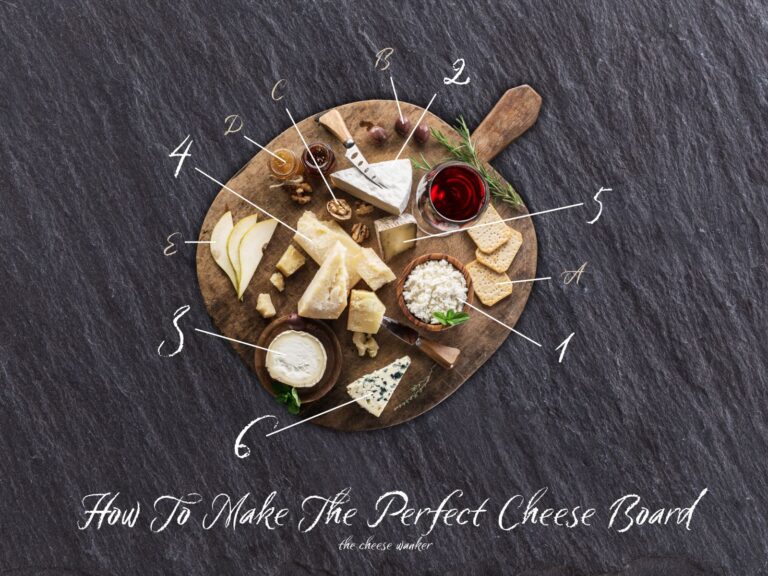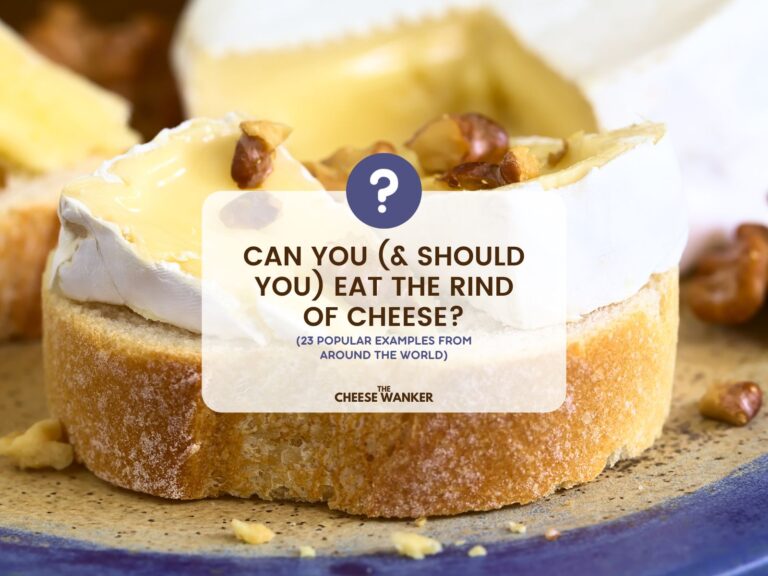As a veteran cheese lover, I can confidently say that proper cheese cutting is a skill that is often overlooked. But it is key to fully enjoying the flavours and textures of different cheeses. In this blog post, I’ll be sharing some tips and tricks on how to cut cheese for serving. Read on to discover the best cutting guidelines for every type of cheese.
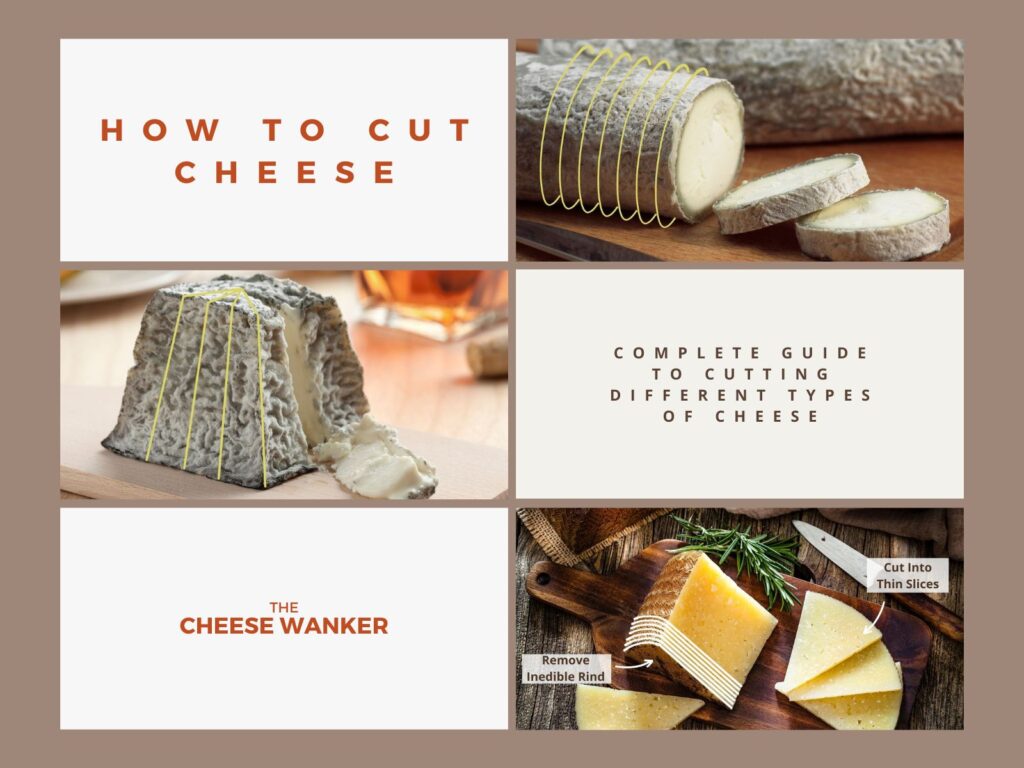
READ MORE: The Cheese Wanker’s Ten Commandments of Cheese →
Why is it important to cut cheese properly?
Without a doubt, the single most important reason for this is to evenly distribute the organoleptic properties of the cheese in each piece. Those include properties such as edible rind, blue mould flavour and range of texture.
In addition to this, presentation is always important when serving cheese. As a sign of respect to the cheesemaker and/or affineur, you will want to ensure that their cheese looks at its best on your cheese platter. This is where using the correct cutting guidelines and cheese knives come into play.
Which cheese knives should you use?
Choosing the right knife for cutting cheese is of paramount importance. Depending on the texture and size of your cheese, you will want to choose a suitable knife. Moreover, it is also critical to use a different, clean and dry knife for each cheese that you are cutting. This will avoid cross-contamination.
You can read more about cheese knives in our comprehensive post here.
How should you cut different types of cheese?
So, what are the best cutting guidelines for every type of cheese? If you want to learn more about the different types of cheese, we’ve got a dedicated post here.
For the purpose of this post, I have divided cheeses according to texture and shape.
Small soft round cheese
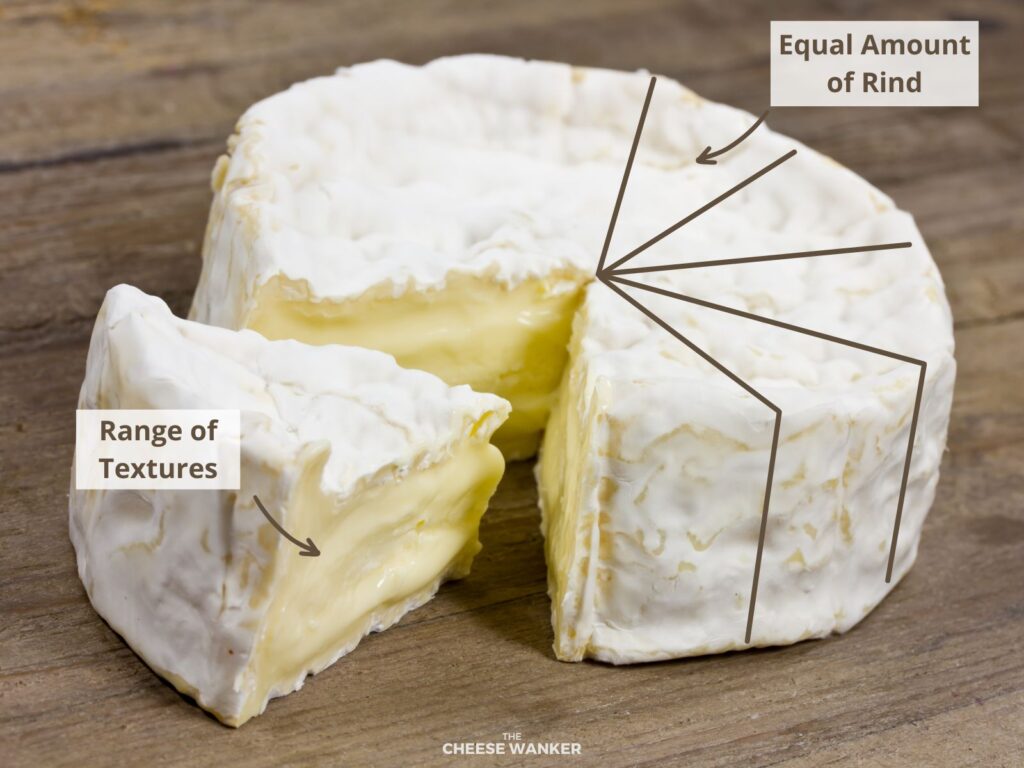
Examples: Camembert, Brillat-Savarin
Undoubtedly, this is one of the most popular types of cheese. When it comes to cutting small soft white mould cheeses, you want to ensure that each wedge has an equal amount of rind.
Moreover, most soft cheeses ripen from the surface. As a result, it is quite common for the centre to be a bit firm and chalky while the paste near the rind becomes softer and creamier. Hence, you will want to cut right through the cheese to incorporate the complete texture range into each wedge.
Large soft round cheese
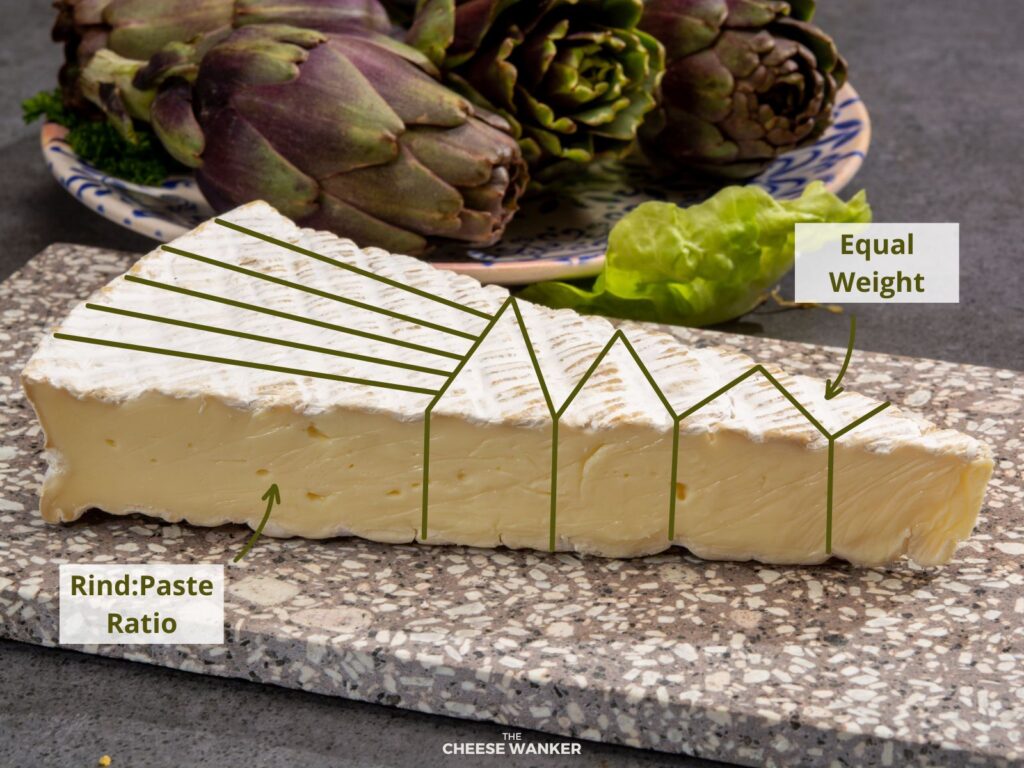
Examples: Brie de Meaux, Baron Bigod
When it comes to large format soft white mould cheeses, the rind to paste ratio is higher than in smaller cheeses. Because of this, the way you should cut a cheese like Brie de Meaux is quite different to a Camembert de Normandie.
Also, the cheese you bring home will most likely have already been cut into a long slice. To ensure the perfect balance of rind and paste, you will want to cut right through the slice of cheese using our diagram above as a guide. This will also create pieces that weigh roughly the same.
Log-shaped soft cheese
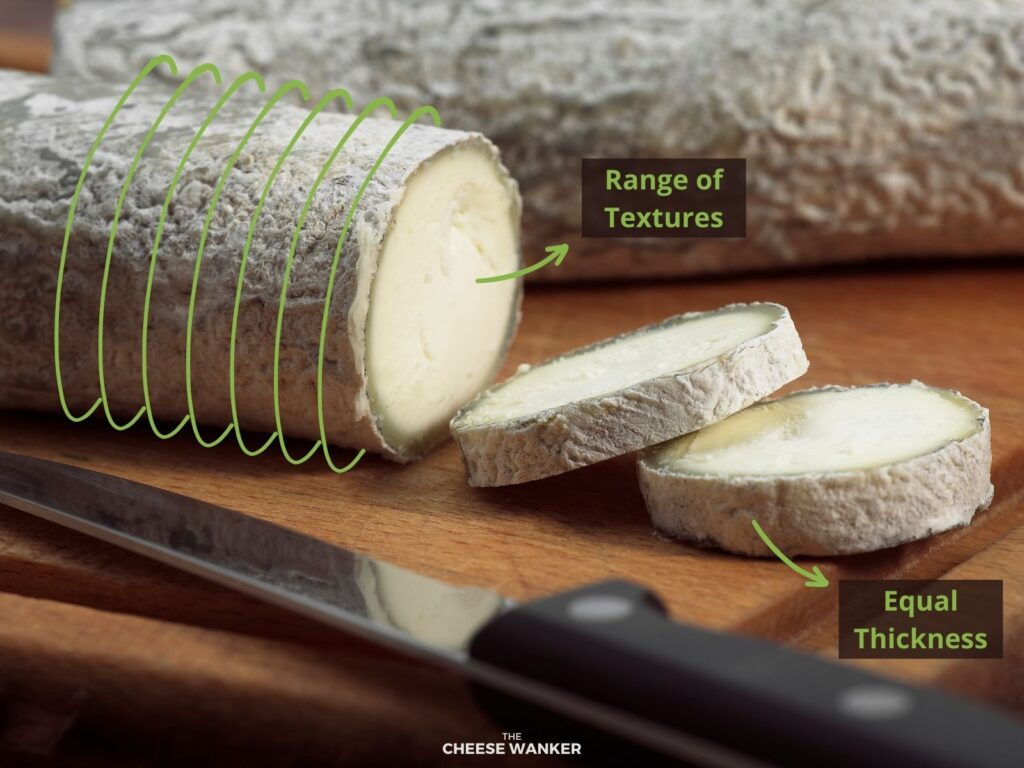
Examples: Sainte Maure de Touraine, Bûche de Chèvre
This might just be one of the easiest types of cheese to cut. Using a sharp knife or a cheese harp, you can simply slice right through the log to produce thin disks of cheese. This will ensure an equal distribution of rind and paste in each piece of cheese.
Just like soft white mould round cheeses, these logs age from the surface to the centre. Hence, you will often find that the log has a chalky core with a soft creamline under the rind. Cutting the cheese into disks will ensure that each piece offers the full range of textures.
Heart-shaped soft cheese
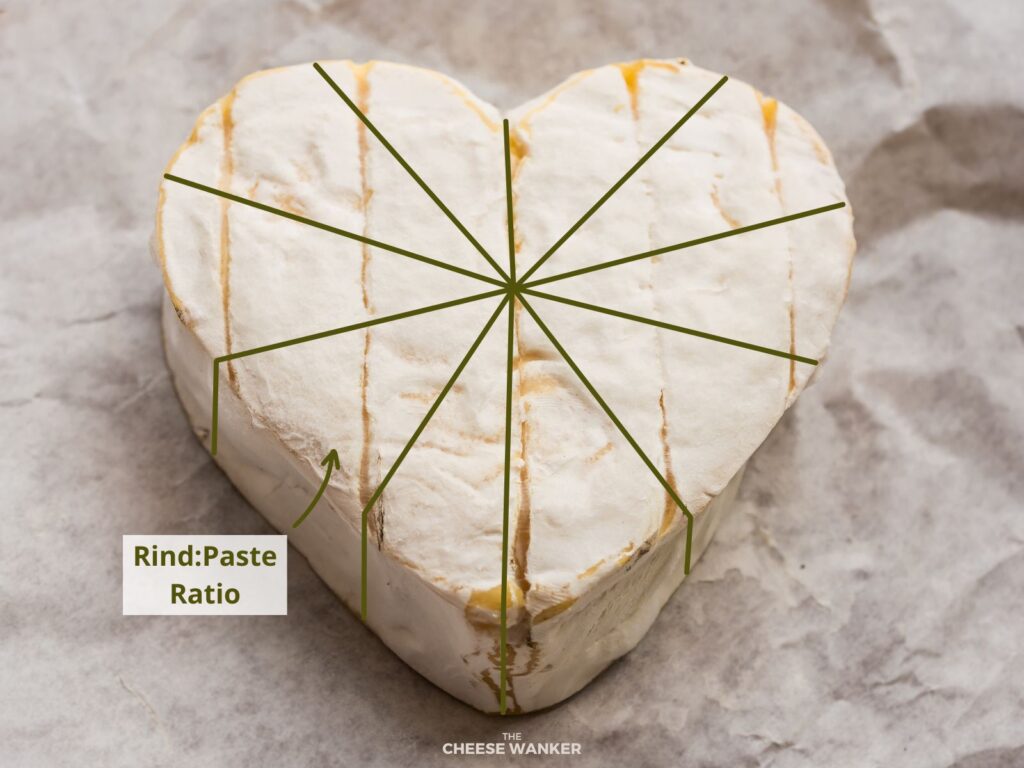
Examples: Neufchâtel, Coeur du Berry
Just like the above examples, heart-shaped soft white mould cheeses like Neufchâtel mature from the rind to the core. Hence, you must cut right through the cheese to capture the full range of textures.
Furthermore, it also has quite a high rind to paste ratio. Following our cutting guide, you will be able to ensure that each piece that you cut will have a similar ratio.
Pyramid-shaped soft cheese
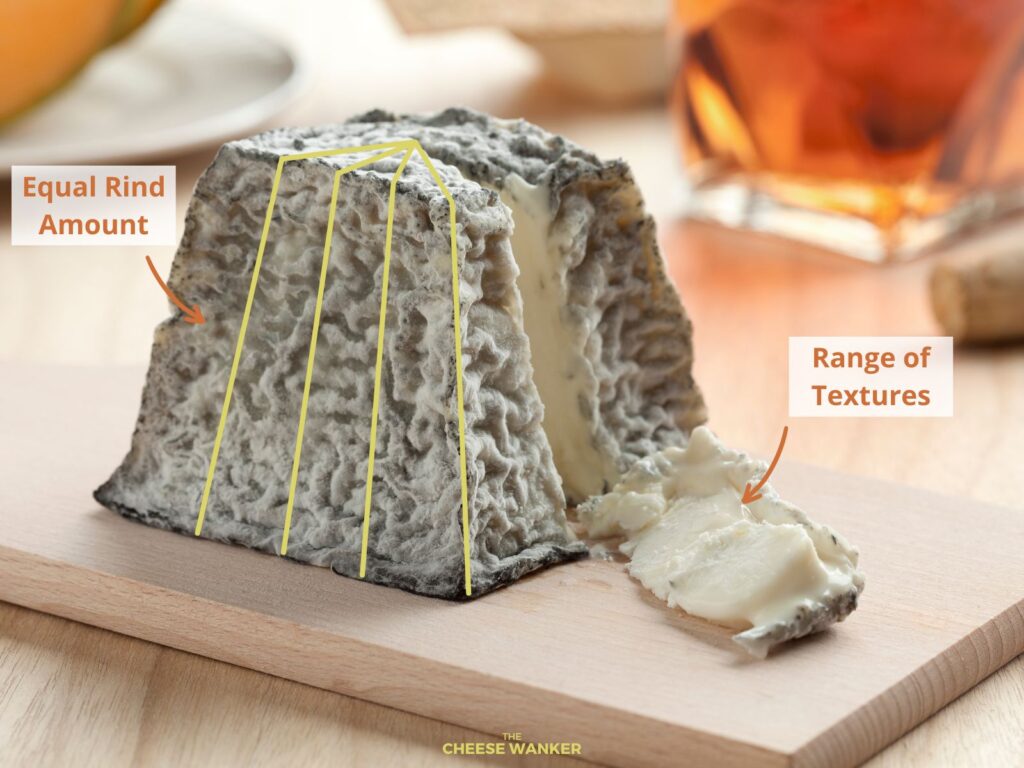
Examples: Valençay, Pouligny Saint Pierre, Sinodun Hill
The final type of soft cheese on our list is the classic French pyramid cheese. Different pyramid cheeses can vary in height and surface area for the top. However, our cutting guide will give you a good distribution of rind and textures for all of them.
Semi-hard cheese with edible rind
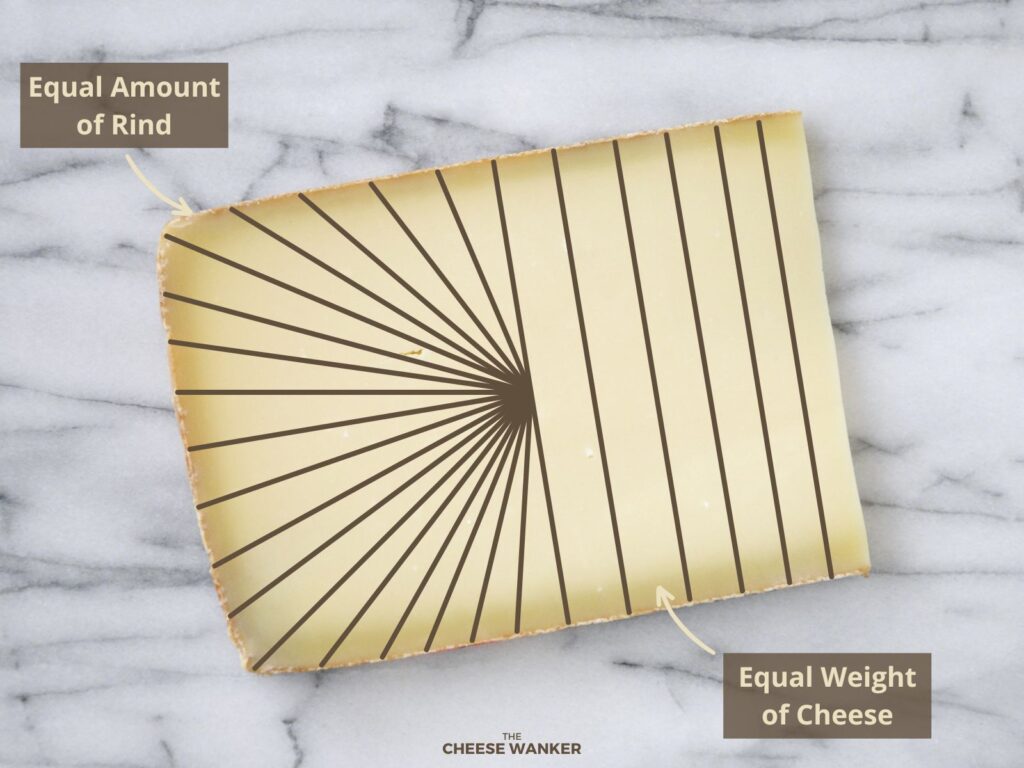
Examples: Gruyère, Comté, Ossau-Iraty
Actually, this type of cheese shares one common feature with large format soft cheeses. Indeed, you will most likely bring home a piece of cheese that has already been cut into a long slice.
However, that’s where the similarities end. The key to cutting a semi-hard cheese with edible rind is to ensure that an equal amount of rind is allocated to each piece of cheese. While the cheese’s texture and flavour can vary subtly from the middle to the rind, it will be less obvious than in a soft cheese.
Using the diagram above as your guide, you will be able to cut the cheese into slices that are roughly 1 cm (½ inch) thick. And there will be a small and equal amount of rind on each slice.
Semi-hard cheese with inedible rind
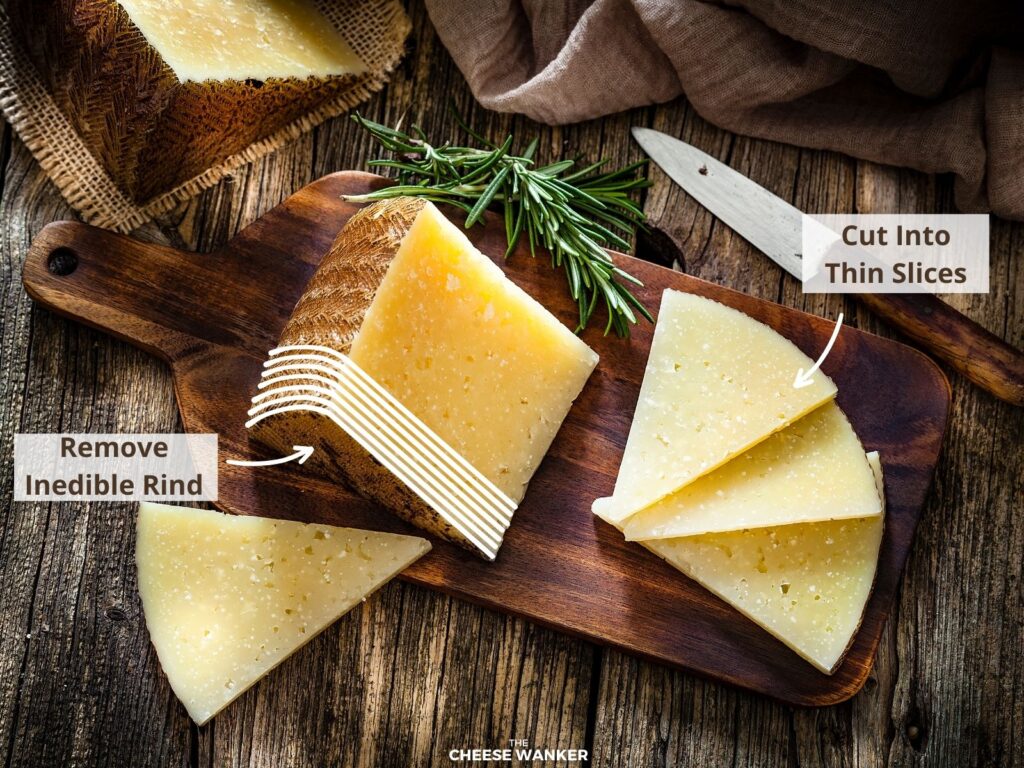
Examples: Manchego, Gouda, Young Cheddar
Unlike our example above, this type of cheese has a rind that you should not be eating. Hence, your first step should be to cut the rind off while not wasting any of the paste underneath.
Once you have removed the rind, you can then very thinly slice the cheese. Aiming for slices that are about 2-3 mm thick will allow you to liberate the delicate aroma and flavour of these aged cheeses.
Hard cheese with inedible rind
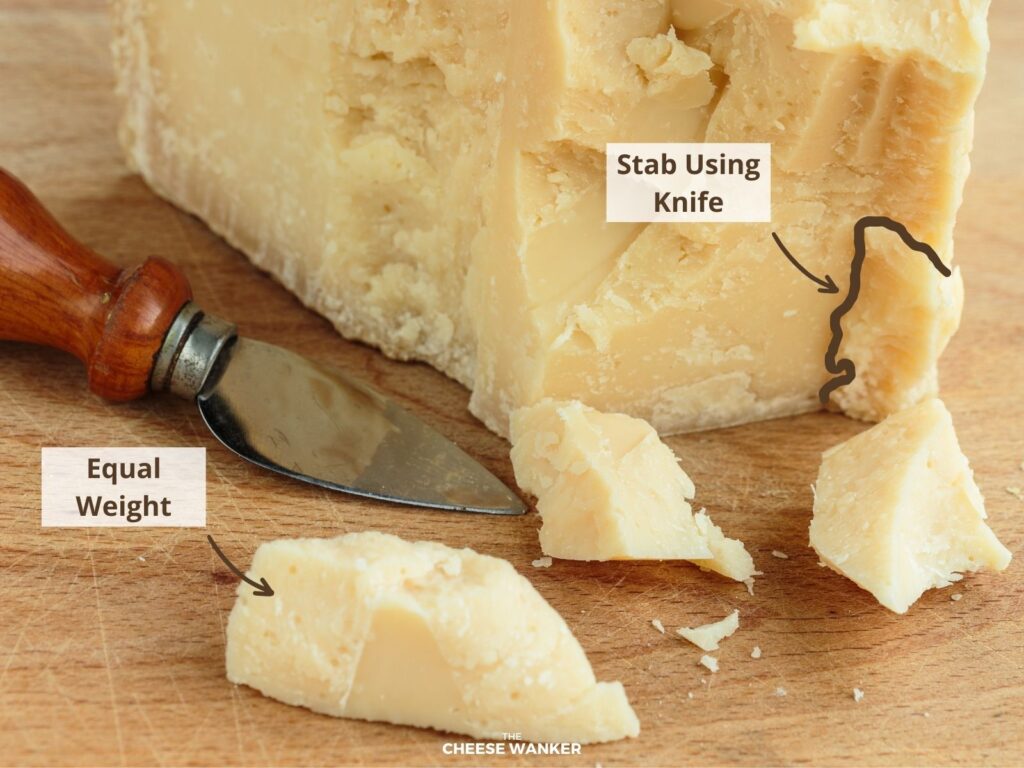
Examples: Parmigiano Reggiano, Aged Cheddar, Mimolette
Now, this is the first type of cheese on our list that you simply cannot slice right through. Indeed, aged cheeses like Parmigiano Reggiano have such a hard texture that you will want to actually stab them using a tear-drop knife like a Tagliagrana.
Hard pressed cheeses tend to have a homogenous distribution of cheese crystals throughout their paste. So, breaking them into similar sized chunks or shards will import a nice balance of texture and flavour in each piece.
Blue cheese
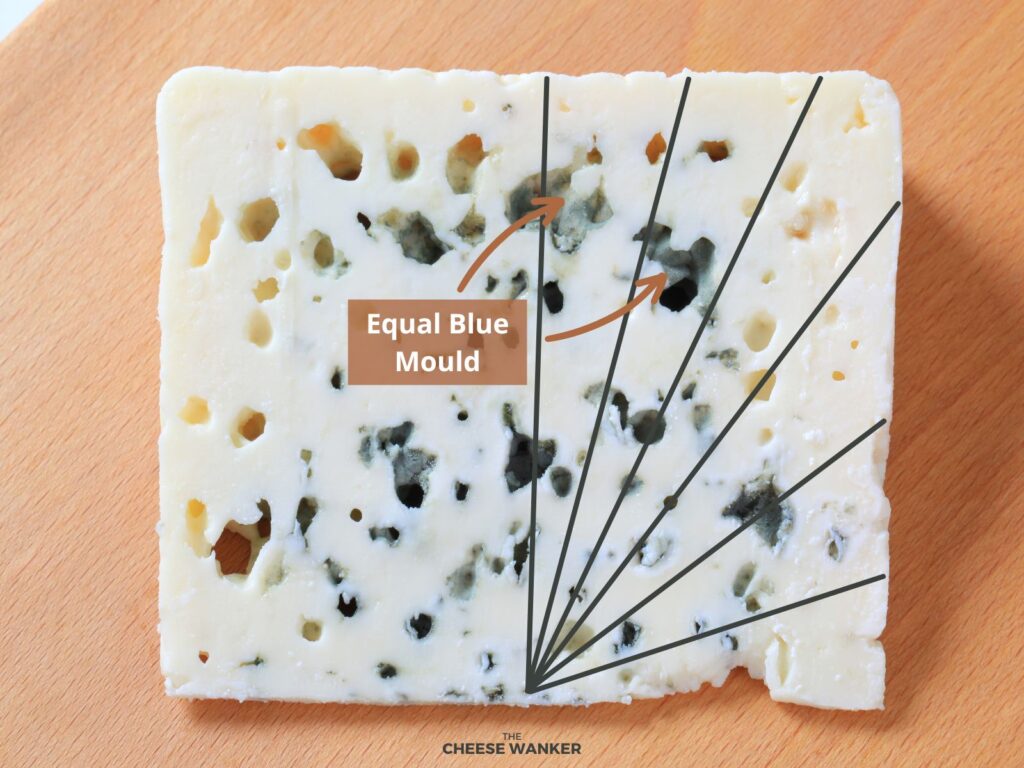
Examples: Roquefort, Stilton, Gorgonzola Piccante
Whether you have a soft blue cheese (e.g., Roquefort) or a firmer one (e.g., Stilton), there is one quality that unites them all. Of course, this is the presence of blue veins and pockets throughout the paste of the cheese. And sometimes even on the rind.
Most of the time, you will buy blue cheese that has already been cut into a wedge. And the key to cutting the wedge before serving is to equally distribute the blue mould in each piece.
In order to do this, you will need to slice the cheese into 1-2 cm (½ – 1 inch) pieces fanning out from the core of the cheese.
Bark-wrapped soft cheese
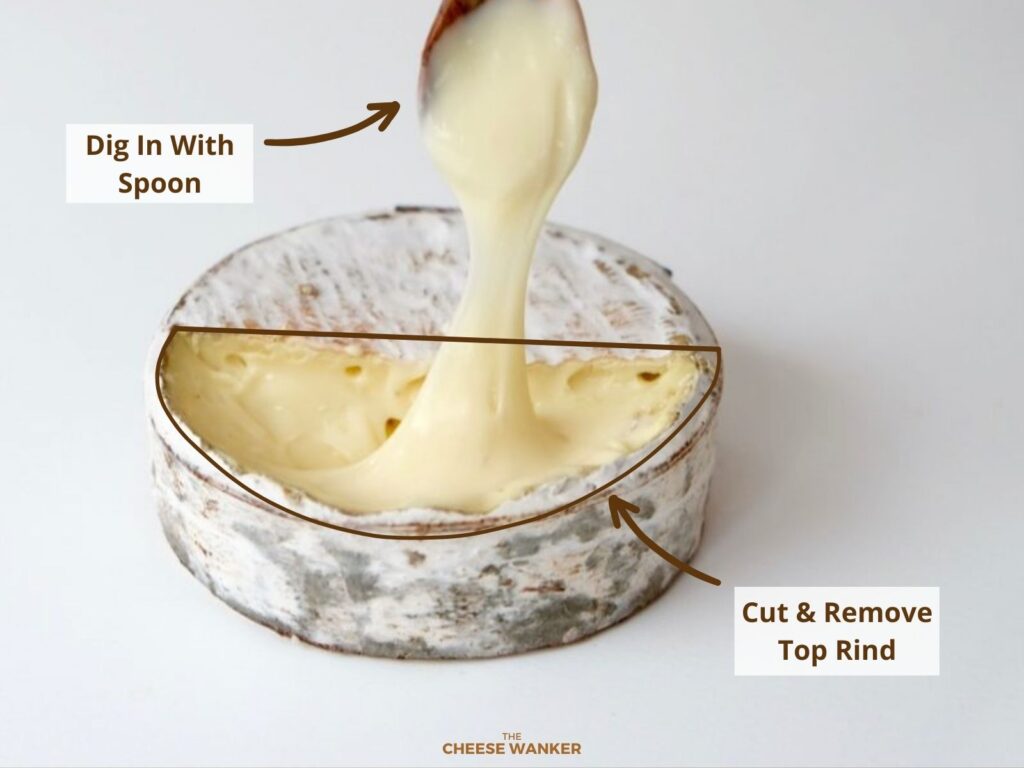
Examples: Mont d’Or, Harbison, Rollright
Finally, we have a unique type of soft cheese. Indeed, this type of soft washed rind cheese is actually wrapped in a strip of spruce bark before maturation. Of course, the bark is inedible, but you can eat the rind that forms around the cheese.
Having said that, my favourite way to eat this type of cheese is to cut and remove half of the top rind. And dig in with a wooden spoon to scoop out the soft, creamy paste.
Summary
As you can see, proper cheese cutting is pivotal to enjoying cheese to its fullest potential. Indeed, the main considerations are rind distribution, texture range and flavour balance. By following these guidelines, you can ensure that each piece of cheese provides a balanced organoleptic experience.
So next time you serve a cheese board, take a little extra time to cut each cheese properly, and you’ll be sure to impress your guests.
Did I leave out your favourite type of cheese? Hit me in the comments below.


